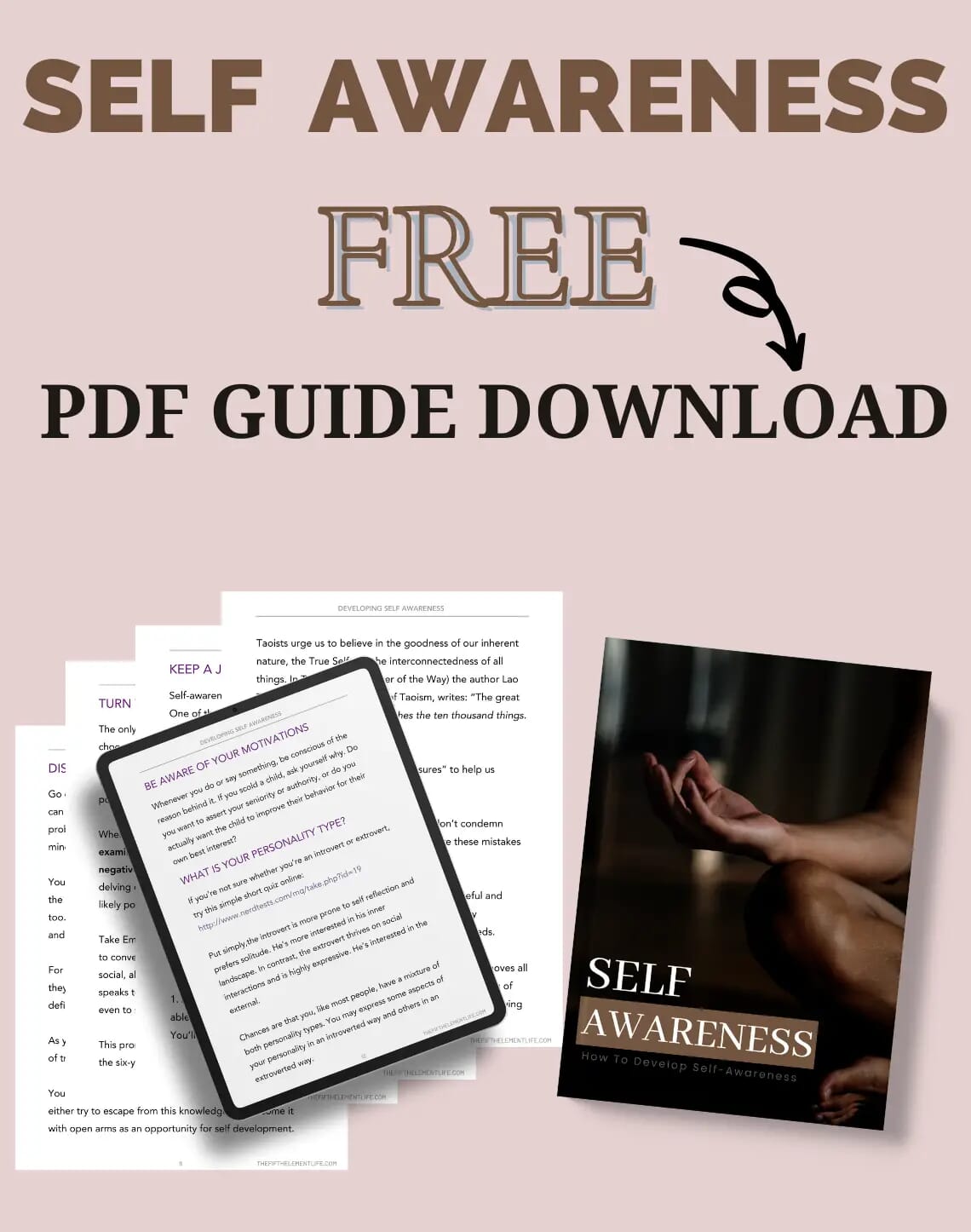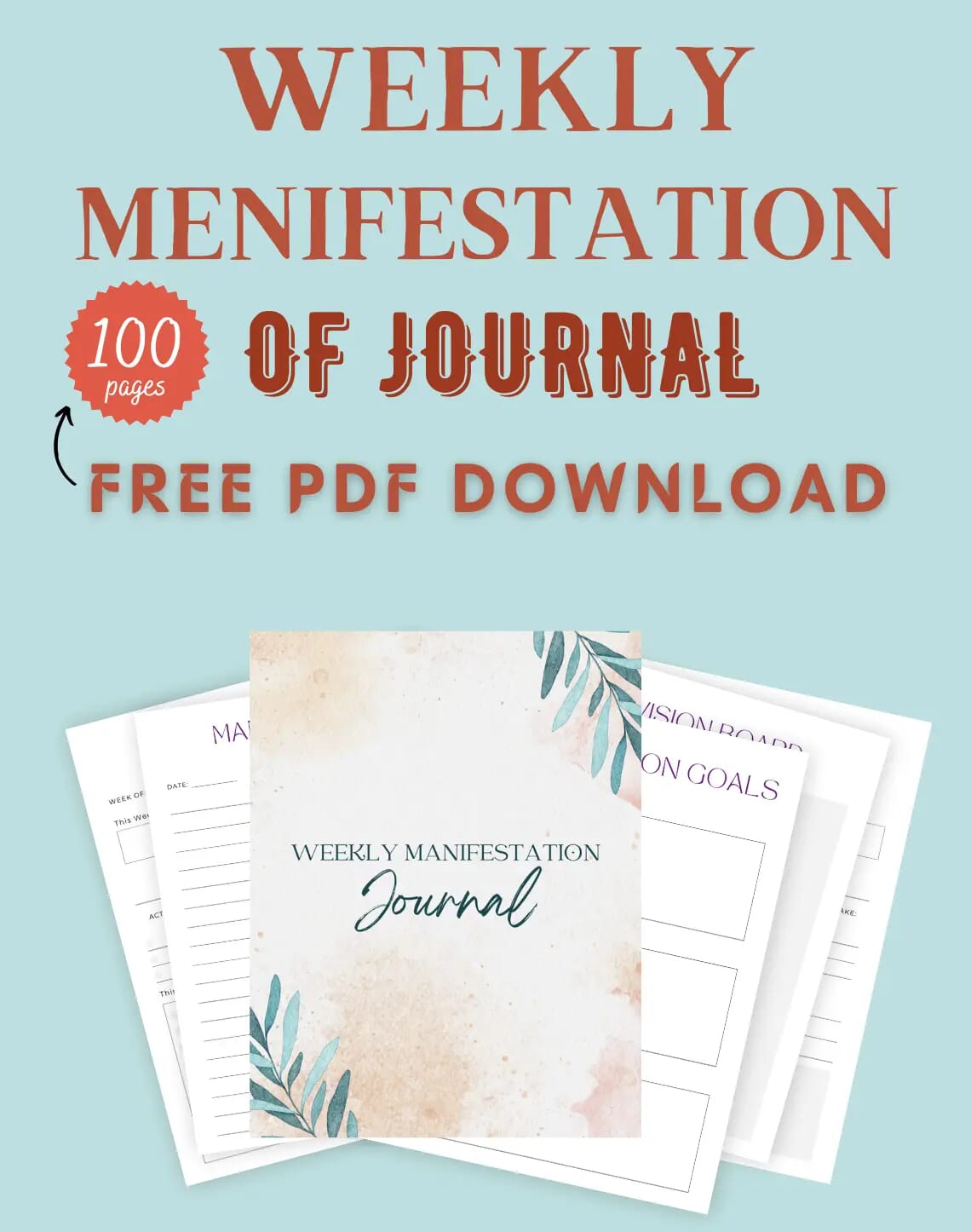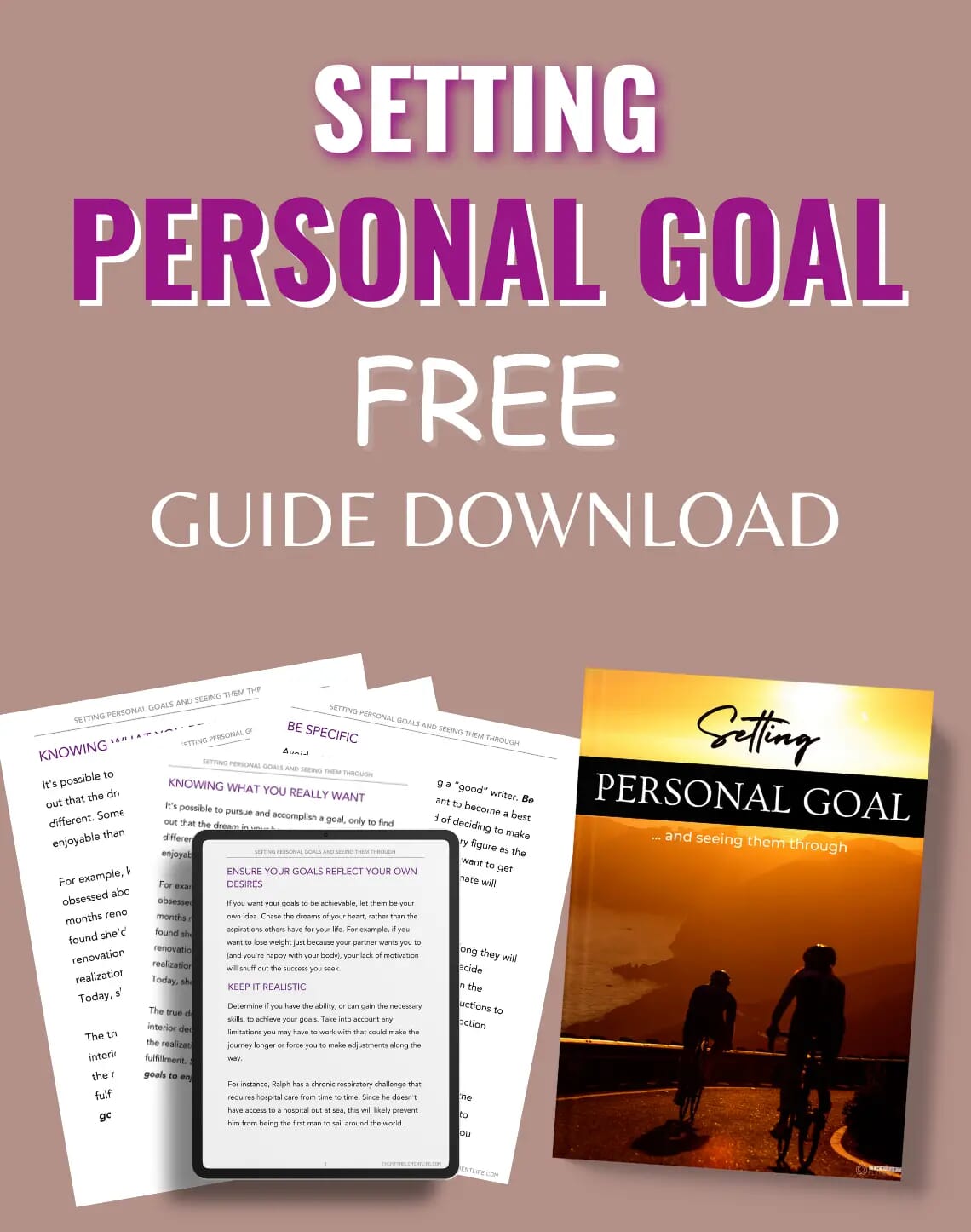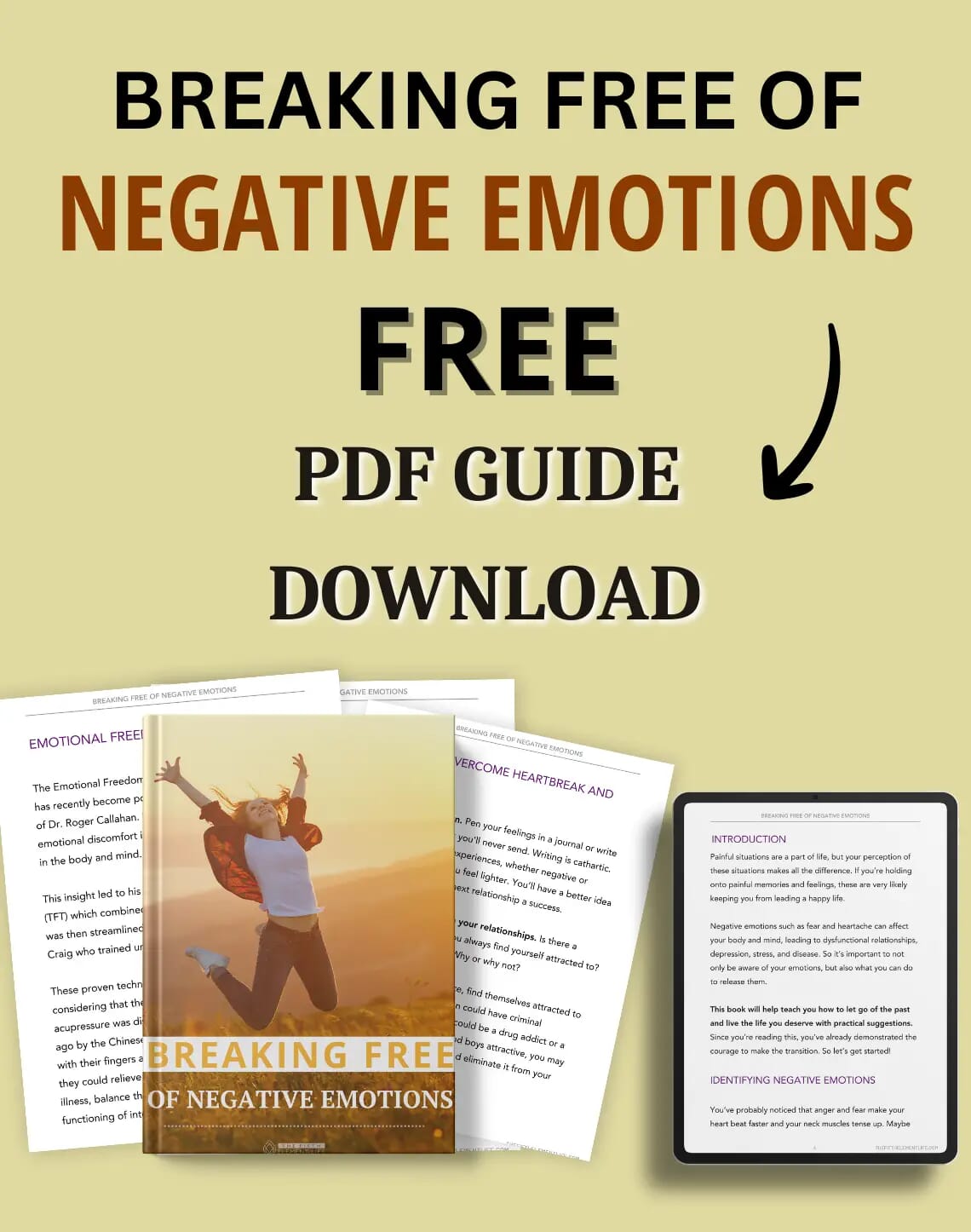Last Updated on May 25, 2023
Ever since I could write, one of my favorite pastimes was snuggling up in bed with a pen and journal (one that was pink and sparkly, of course). Here, you can notice about how to journal the ultimate guide and summarizing the day’s events on paper.
Although as a child these journal entries were fairly basic and sounded something like, “omg I can’t believe Mason has a crush on Sara”, as I grew older (and wiser), I began shifting my focus from simply addressing daily occurrences to actually reflecting on them.
As I continued to foster this practice, I quickly realized what a powerful tool journaling really is.
If done with intention and dedication, journaling can be instrumental in personal growth and self-reflection.
When you really take the time to look inward and translate those thoughts and feelings into physical words, you experience immense positive changes in your life.
Journaling, for example, has helped me navigate some of the most challenging moments of my life, from the loss of my grandmother to periods of intense anxiety and self-doubt.
And depending on your specific needs, there are a variety of methods and techniques that will aid you on your self-help journey, each with their own purpose and benefits.
In this article, we’ll explore 30 different types of journaling, each with their own unique benefits and purposes.
From gratitude journals to bullet journals to dream journals, there’s something for everyone.
So grab a notebook and pen, and let’s dive in!
The Benefits of Journaling
Before we get into the specific types of journaling, it’s good to be aware of the many benefits to your personal growth and well-being this practice offers.
Here are some of the most important benefits:
- Reducing stress and anxiety: Writing down your thoughts and feelings can help you process them and reduce stress and anxiety.
- Improving focus and productivity: Journaling can help you clarify your goals and priorities, and stay focused on what’s important.
- Enhancing creativity: Journaling provides a safe space to explore your ideas and thoughts, which can help spark your creativity.
- Increasing self-awareness: By regularly journaling, you can become more aware of your thoughts, emotions, and behavior patterns, which can help you make positive changes in your life.
- Cultivating a positive mindset: Gratitude journaling can help you focus on the positive aspects of your life and cultivate a more optimistic outlook.
Types of Journals
There are many types of journals you can choose from, depending on your needs and interests.
Here are some of the most popular types of journals:
Gratitude journaling
Gratitude journaling involves writing down things you are grateful for each day, such as people, experiences, and achievements.
This practice can help you cultivate a more positive and appreciative mindset. You can use a simple notebook or a dedicated gratitude journal with prompts and quotes.
I started this type of journaling several years ago and it was truly transformative.
Set aside a few minutes each day to write down at least three things you are grateful for.
And these things don’t have to be super profound. They could be as simple as being thankful for clean water and a warm bed (and if you have a sweet tooth like me, chocolate may also make the list!).
You can also include reflections on why these things are meaningful to you and how they have impacted your life.
To get started, try using these helpful journal prompts.
RELATED: 518 Powerful Quotes To Manifest The Life Of Your Dreams
Reflective journaling
Are you a person who spends half the night awake, overthinking? If so, I feel you!!
Overthinking isn’t fun, but if you’re doing the introspection anyway, why not channel it through a healthy and productive method?
Say hello to reflective journaling. What is it exactly?
Essentially, reflective journaling involves writing about your thoughts, feelings, and experiences, and analyzing them to gain new insights and perspectives.
This practice can help you process your emotions and make meaning out of your life experiences.
To start, choose a quiet and comfortable space where you can write without distractions.
Write freely and openly about anything that comes to mind, such as your day, your relationships, or your goals.
Then, go back and read what you wrote, and look for patterns, themes, and connections.
Ask yourself questions like “Why do I feel this way?” or “What can I learn from this experience?”
Stream of consciousness journaling
You know those times when your mind is exploding with thoughts and it becomes overwhelming?
When this happens, it’s time to grab a pen and notebook and start stream of consciousness journaling.
In this type of journaling, you simply write down whatever comes to mind without censoring or editing yourself- hence why it’s such a great way to “unload”.
This practice can help you access deeper layers of your subconscious mind and unlock your creativity.
To start, set a timer for 10-20 minutes and write continuously without stopping or crossing out anything (if you don’t know where to start, check out these journal prompts).
Write down whatever comes to mind, no matter how silly or random it may seem. The goal is to let your thoughts flow freely without judgment or self-criticism.
This practice can help you clear your mind, release stress, and discover new ideas and insights.
Bullet journaling
If you’re a person who loves to take a list to the grocery store every week and who’s notes section on their phone is more extensive than their photo library, then this technique will be right up your alley.
Bullet journaling is a system of journaling that involves using bullet points, symbols, and lists to organize your thoughts, goals, and tasks.
This practice can help you increase your productivity and stay on top of your responsibilities- it’s also great for busy moms who are looking for efficiency!
To start, create an index page where you can list your topics and page numbers.
Then, use symbols such as dots, circles, and squares to indicate different types of information, such as tasks, events, and notes.
You can also use signifiers such as asterisks, exclamation marks, and question marks to prioritize or highlight important items.
The beauty of bullet journaling is that you can customize it to your needs and preferences.
To get started, make sure to check out these useful journal prompts.
Creative journaling
Creative journaling involves using art, color, and design to express yourself and your ideas and is one of my personal favorite techniques (I mean, who doesn’t want to add a little sparkle to their life?).
Creative journaling is great because it can help you tap into your creativity and explore new forms of self-expression.
To start, choose a journal with blank or dotted pages that can handle different types of media, such as pens, markers, watercolors, and stickers.
Use your journal to experiment with different styles and techniques, such as hand lettering, drawing, collage, or painting.
You can also use creative prompts or challenges to spark your inspiration and expand your skills.
Make sure to have fun with this one, and don’t forget the glitter!
RELATED: 302 Inspiring Daily Habit Quotes To Build A Better Life
Dream journaling
If you have very vivid dreams but have a hard time remembering them, dream journaling is a great solution.
In a dream journal, you write down your dreams each morning and analyze their symbols and meanings.
This practice can help you understand your subconscious mind and gain insights into your inner world.
To start, keep a journal and pen next to your bed and write down your dreams as soon as you wake up.
Try to capture as much detail as possible, such as colors, people, and emotions. Then, review your dreams and look for patterns and themes.
Ask yourself questions such as “What do these symbols represent?” or “What do these dreams tell me about my fears or desires?”
I, for example, often dreamt about being at school. Through dream journaling I became aware that this indicated that life was trying to teach me a lesson.
I also often dream I am in complete darkness. By analyzing this I realized I may have a fear of the unknown.
Prompt-based journaling
In this type of journaling, you use prompts or questions to guide your writing and reflection and is a great option for when you’re feeling stuck and don’t know where to start.
This practice can help you explore different topics and perspectives and deepen your self-awareness.
You can use a variety of prompts, such as inspirational quotes, personal development questions, or creative writing prompts.
To start, choose a prompt that resonates with you and write down your response.
Write freely and openly without worrying about grammar or structure. Use the prompt as a starting point and let your thoughts flow naturally.
You can also use prompts as a way to overcome writer’s block or to challenge yourself to try new things.
Travel journaling
Are you a citizen of the world? Do you identify with the phrase “wanderlust”?. If so, you’re likely an avid travel like me and should definitely start a travel journal!
Travel journaling involves documenting your travel experiences and memories.
This practice can help you preserve your memories and reflect on your adventures and is super easy to get going.
To start, choose a journal that is lightweight and portable, and bring it with you on your travels.
Write down your observations, impressions, and feelings about the places you visit, the people you meet, and the things you do.
You can also include sketches, maps, and tickets to make your journal more visual and interactive (seashells are also adorable).
Travel journaling can be a great way to capture the essence of your trips and create a keepsake that you can look back on for years to come.
RELATED: 145 Inspiring Vision Board Quotes To Manifest Your Dreams
Nature journaling
There is so much beauty in this world but unfortunately, in our chaotic society, a lot of it goes unnoticed.
But it doesn’t have to be this way.
Nature journaling involves observing and documenting the natural world around you.
This practice can help you connect with nature, cultivate mindfulness, and deepen your sense of wonder and gratitude.
To start, find a quiet and peaceful spot in nature, such as a park, a garden, or a forest. Use your journal to record your observations, such as the colors, textures, and sounds of your surroundings.
You can also sketch or paint what you see, or collect leaves, flowers, and stones to include in your journal.
Nature journaling can be a way to slow down, appreciate the beauty of the world, and tap into your creativity.
Bullet point journaling
This is similar to bullet journaling, but instead of creating a complex system of symbols, you simply write down short, concise notes and observations.
This practice can be a quick and efficient way to capture your thoughts and ideas without getting bogged down in details.
To start, use a small notebook or a sticky pad and write down your ideas in bullet points.
You can also use different colors of highlighters to organize your notes by theme or priority.
This practice can help you stay organized, streamline your workflow, and reduce clutter in your mind.
Art journaling
Art journaling involves combining writing with visual art, such as drawing, painting, or collage.
This practice can help you tap into your creativity and express your thoughts and emotions in a visual way.
To start, choose a journal with blank pages or one with prompts, and use a variety of art supplies to create your pages.
You can combine images, words, and colors to create a unique and meaningful visual representation of your thoughts and feelings.
Mindfulness journaling
Mindfulness journaling involves using writing as a way to cultivate mindfulness and awareness in the present moment.
This practice can help you reduce stress and anxiety, increase focus and clarity, and improve your overall well-being.
To start, find a quiet and peaceful space, set a timer for a few minutes, and focus on your breath.
Use your journal to record your thoughts and feelings as you focus on your breath and observe your surroundings.
Prayer journaling
Prayer journaling involves using writing as a way to connect with your spirituality and reflect on your faith journey.
This practice can help you deepen your relationship with a higher power and find meaning and purpose in your life.
To start, choose a journal that feels sacred and special to you, and use it to write down your prayers, reflections, and insights.
You can also use your journal to record inspirational quotes, verses, or passages that resonate with you.
Make sure to check out these spiritual journal prompts for more inspo.
Self-care journaling
With such busy lives, it can be easy to neglect ourselves every now and then.
But it’s important to remember that in order to present our best selves to the world, we have to put in the work to ensure we are taking care of our own wellbeing.
Self-care journaling is a great solution as it involves using writing as a way to prioritize your self-care and well-being.
This practice can help you develop a self-care routine and stay accountable to your goals.
To start, choose a self-care prompt or question, such as “What is one thing I can do today to take care of myself?” or “What are my self-care priorities this week?”
Use your journal to track your progress, celebrate your achievements, and explore any obstacles or challenges that come up.
Law of attraction journaling
Have you ever wanted to manifest something into your life but weren’t sure where to start?
Law of attraction journaling involves using writing as a way to manifest your desires and attract positive experiences into your life.
This practice is based on the law of attraction, which states that you can attract what you focus on.
To start, write down your goals and desires as if they have already happened. Use positive language and visualize yourself experiencing them.
This practice can help you focus on what you want and shift your mindset to a more positive and abundant one (the sky’s the limit!).
Memory journaling
As a person who inherited my mother’s genetic disposition toward forgetting everything, I am always trying to find tools to aid my memory.
For me, one of the best tools is memory journaling.
Memory journaling involves using writing as a way to capture and preserve your memories.
This practice can help you reflect on your past experiences, learn from them, and create a record of your life.
To start, choose a memory or experience that stands out to you, and use your journal to describe it in detail.
Reflect on how it made you feel, what you learned from it, and how it has impacted your life.
This practice can help you appreciate your past and gain a deeper understanding of who you are today.
Nature journaling
Nature journaling involves using writing as a way to connect with the natural world and reflect on your relationship with it.
This practice can help you develop a deeper appreciation for nature, and learn about the plants, animals, and landscapes around you.
To start, choose a natural setting or element, such as a tree, a river, or a bird, and use your journal to describe it in detail.
Include observations about its physical features, behavior, and habitat, and reflect on how it makes you feel and what you can learn from it.
This practice can help you develop a more mindful and sustainable relationship with nature.
Relationship journaling
As social beings, we not only desire human companionship, we need it. But despite this, social interactions are not always easy.
Especially when these interactions become relationships and we have to find ways to navigate our differences.
Relationship journaling involves using writing as a way to explore your relationships with others, including romantic partners, family members, and friends and is the perfect way to understand your communication style, express your emotions, and work through conflicts.
To start, choose a relationship that is important to you, and use your journal to reflect on your interactions with the other person.
Write down your thoughts and feelings, and explore any patterns or issues that come up.
This practice can help you strengthen your relationships and develop healthier communication skills.
Food journaling
Social media is always promoting healthy eating but if you’ve ever actually tried dieting, you know that this is easier said than done.
This is why journaling can be so beneficial.
Food journaling involves using writing as a way to track your diet and eating habits.
This practice can help you develop healthier eating habits, identify food sensitivities, and manage your weight.
To start, use your journal to record what you eat and drink each day, including portion sizes, ingredients, and calories.
Include notes about how each food makes you feel, and reflect on any patterns or cravings that emerge.
This practice can help you develop a more mindful and intuitive relationship with food.
Vision board journaling
Next time the New Year rolls around and you’re about to start creating a vision board on your phone, why not try something that’s a little more hands on?
Vision board journaling involves using writing and visuals as a way to clarify your goals and intentions.
This practice can help you visualize your dreams, clarify your values, and stay motivated.
To start, use your journal to write down your goals and dreams, and collect images, words, and symbols that represent them.
Create a collage on a page or two, and reflect on what each element means to you.
This practice can help you stay focused on what matters most and stay motivated to achieve your goals.
If you’re having trouble getting started, you can also use these vision board journal prompts.
Minimalist journaling
That’s right, minimalism doesn’t just refer to dome decor or your OOTD, it can also be applied to writing!
Minimalist journaling essentially involves using writing as a way to simplify your thoughts and declutter your mind.
This practice can help you reduce overwhelm, increase clarity, and cultivate inner peace.
To start, use your journal to write down the most important thoughts or tasks for the day, and focus on brevity and clarity.
Use short sentences and bullet points to capture the essence of your ideas, and reflect on how this practice helps you feel more centered and focused.
Goal Setting Journaling
Regardless of where you are in life, it’s important to have goals that you can work toward.
Goal setting journaling is a type of journaling that focuses on doing just this.
This type of journaling helps individuals to clarify their goals, identify the obstacles that prevent them from achieving those goals, and develop an action plan to overcome those obstacles.
When it comes to goal setting journaling, it is important to set realistic and achievable goals.
These goals should be specific, measurable, and time-bound. Writing down these goals in a journal can help individuals to stay focused and motivated, and track their progress.
Goal setting journaling can also help individuals to identify their strengths and weaknesses, and develop strategies to overcome challenges.
This type of journaling can be especially helpful for individuals who struggle with procrastination or lack motivation.
Therapy Journaling
Therapy journaling is a type of journaling that is often used in conjunction with therapy or counseling.
This type of journaling involves writing down thoughts and feelings related to specific issues or problems that individuals are facing.
Therapy journaling can help individuals to gain insight into their thoughts and emotions, and identify patterns of behavior that may be contributing to their problems. Writing down these thoughts and feelings can also help individuals to process their emotions and reduce feelings of anxiety or depression.
Therapy journaling can be a valuable tool for individuals who are undergoing therapy or counseling, as it allows them to continue the therapeutic process outside of the therapy session.
This type of journaling can also be helpful for individuals who are unable to access therapy or counseling due to financial or logistical barriers.
Photo Journaling
Attention all photography enthusiasts! Taking photos has just gotten a whole lot more fun.
Photo journaling is a type of journaling that involves taking photographs and using them as a way to document one’s life experiences.
This type of journaling can be a creative and fun way to record memories and reflect on one’s life journey.
Photo journaling can be especially helpful for individuals who struggle with expressing themselves through words.
By taking photographs, individuals can capture the essence of their experiences and emotions, and reflect on them in a visual way.
Photo journaling can also be a way to explore and appreciate the world around us.
By focusing on the beauty and details of our environment, we can cultivate a sense of gratitude and mindfulness.
Counting Blessings Journaling
If you like to focus on the positives in life, then this method is a great option.
Counting blessings journaling is a type of journaling that involves reflecting on the positive things in life and expressing gratitude for them.
This type of journaling can be especially helpful for individuals who tend to focus on negative aspects of their lives or struggle with feelings of anxiety or depression.
Counting blessings journaling can be done on a daily or weekly basis, and involves writing down three to five things that you are grateful for.
These things can be big or small, and can include anything from a good cup of coffee to spending time with loved ones.
By focusing on the positive aspects of life, counting blessings journaling can help individuals to develop a more positive outlook on life and improve their mental well-being.
Morning Journaling
As a person who is more alert in the morning and who often wakes up with anxiety, my favorite time to reflect is in the morning.
Morning journaling is a type of journaling that involves writing down your thoughts, feelings, and intentions for the day ahead.
It’s a great way to set a positive tone for the day and increase self-awareness.
Morning journaling can be done as soon as you wake up, and can involve writing down your goals for the day, any worries or concerns you have, and any positive affirmations or intentions that you want to focus on.
By starting the day with a clear and focused mind, morning journaling can help individuals to be more productive and achieve their goals.
If you’re not sure where to begin, try using these helpful morning journal prompts.
End of the Day Recap Journaling
On the other hand, if you have a hectic morning, are more of a night person or just prefer to reflect in the evening, end of the day recap journaling is your go-to.
End of day journaling is a type of journaling that involves reflecting on the events of the day and processing any emotions or thoughts that arise.
This type of journaling can help individuals to develop self-awareness and improve their emotional well-being.
End of the day recap journaling can involve writing down what you did during the day, how you felt about those activities, and any challenges or successes you experienced.
It can also involve processing any difficult emotions that came up during the day, and identifying any patterns of behavior or thought that may be contributing to those emotions.
By reflecting on the events of the day, end of the day recap journaling can help individuals to gain insight into their own thoughts and emotions, and develop strategies for managing them in the future.
Journaling Emotions
As an emotional person, being able to process and deal with my feelings in a healthy manner is extremely important.
Well, journaling can help with that too.
Journaling emotions involves writing down your feelings and thoughts about a particular event, experience, or situation.
This type of journaling can help individuals to process their emotions, gain insight into their thoughts and behaviors, and develop healthier coping strategies.
To journal emotions, individuals can start by writing down the situation or event that triggered their emotions, and then explore the emotions that they are feeling.
This can involve describing the physical sensations that accompany those emotions, identifying any patterns or triggers that may be contributing to those emotions, and exploring any underlying beliefs or attitudes that may be influencing their emotional response.
By journaling emotions, individuals can gain a better understanding of their own emotions, develop strategies for managing them, and improve their overall emotional well-being.
RELATED: 96 Of Jerry & Esther Hicks’ Most Influential & Inspiring Quotes To Become Your Best Self
Journaling The “5 Ways Technique”
The 5 ways technique is a problem-solving technique that can be used to address a wide range of challenges and obstacles.
Journaling the 5 ways technique involves writing down the problem or challenge that you are facing, and then exploring five different ways that you could potentially address that challenge.
Here’s an example:
Problem: You’re feeling stressed and overwhelmed at work.
What is one practical thing you can do to improve the situation?
Example: Prioritize tasks and make a to-do list.
What is one thing you can do to improve your mood and reduce stress?
Example: Take a 10-minute break to go for a walk or meditate.
Who can you talk to for support and guidance?
Example: Speak with a trusted colleague or supervisor for advice.
What is one thing you can do to create a more positive work environment for yourself?
Example: Decorate your workspace with plants or inspirational quotes.
What is one long-term solution to this problem?
Example: Consider speaking with a therapist or coach to work on stress-management techniques.
The five ways can be based on a range of approaches, such as practical solutions, emotional strategies, or cognitive reframing.
By exploring multiple potential solutions, individuals can develop a more comprehensive understanding of their challenge and identify a range of strategies for addressing it.
Journaling the 5 ways technique can be particularly helpful for individuals who tend to feel stuck or overwhelmed when facing a challenge, and who want to develop more proactive and effective problem-solving strategies.
Journal Prompts
A final helpful technique to get started with journaling is to use journal prompts.
Journal prompts are thought-provoking questions or statements that prompt reflection and encourage deeper self-awareness.
To use journal prompts, start by choosing a prompt that resonates with you. You can find prompts online or in books dedicated to journaling. Next, set aside time to write and find a quiet space where you can focus.
Begin writing with the prompt in mind, and let your thoughts flow freely onto the page. Write for as long as you need to, without worrying about grammar or spelling.
Once you’ve finished, take a few deep breaths and reflect on what you wrote. You may find that you feel lighter or have gained new insights into yourself or a situation.
Repeat this process with different prompts to continue exploring different aspects of your life and emotions.
Remember, the goal of journaling is not to be perfect or to have a finished product, but rather to simply explore your thoughts and feelings in a safe and supportive space.
Here are some examples of journal prompts to help get you started:
- What is something you’re grateful for today, and why?
- What is a current challenge you’re facing, and how can you overcome it?
- Describe a time when you felt proud of yourself, and why?
- What is a goal you have for the next year, and what steps can you take to achieve it?
- What is a limiting belief you hold about yourself, and how can you reframe it into a positive affirmation?
- Write about a book or movie that has had a significant impact on you, and why?
- What is something you’ve been avoiding, and what can you do to tackle it?
- Describe a moment when you felt truly content and at peace.
- Write a letter to your younger self, what advice would you give them?
- What is one thing you’d like to let go of, and how can you work towards releasing it?
For a more extensive list of prompts, make sure to check out this article.
Next Steps
Journaling
Incorporating journaling into your daily routine can be a rewarding and transformative experience.
Whether you choose to try one or several of the journaling techniques we’ve explored in this article, the important thing is to find a practice that resonates with you and helps you achieve your personal goals.
Here are some further tips to get you feeling writing-ready:
- Choose 1-3 journaling techniques that resonated with you the most and give them a try. Start with the technique that feels most accessible or exciting to you.
- Set a specific time and place for your journaling practice. Make it a part of your daily routine so that it becomes a habit.
- Experiment with different types of journaling materials, such as colored pens, stickers, or washi tape, to make your journaling experience more engaging and fun.
- Set specific goals or intentions for your journaling practice. For example, you might aim to write in your journal for 10 minutes each day or use a gratitude journal to focus on the positive aspects of your life.
- Don’t be afraid to get creative with your journaling practice. Use your journal to explore your interests, hobbies, and passions.
- Reflect on your journaling practice regularly. Consider what’s working well for you and what could be improved. This will help you refine your practice and make it more meaningful over time.
Remember, journaling is a safe and supportive space to explore your thoughts and emotions without judgment.
So don’t be afraid to experiment, get creative, and make your journaling practice your own.
Listen To Positive Music
Positive music can have a beneficial effect on your mood and emotions, which can enhance your journaling process in several ways:
- Inspiration: Positive music can inspire you to write more freely and creatively. It can help you tap into your imagination and explore new ideas and perspectives.
- Motivation: Listening to upbeat music can help you feel energized and motivated, which can help you maintain focus and productivity throughout your journaling session.
- Emotional regulation: Positive music can help regulate your emotions, reducing negative feelings such as stress, anxiety, or depression. This can create a more conducive environment for journaling and self-reflection.
- Memory recall: Listening to music while journaling can also help you remember details and emotions associated with a particular moment or event. This can aid in the process of self-reflection and introspection.
To incorporate positive music into your journaling process, you can create a playlist of songs that inspire you and help you stay focused.
Experiment with different genres and tempos to find the music that works best for you.
You can also use music as a writing prompt by selecting a song and writing about the memories, emotions, or thoughts that it evokes.
If you’re stuck on what songs to choose, make sure to check out these self-help lists of inspirational music.
Use Crystals
Crystals have been used for centuries to promote spiritual growth and healing.
When used in conjunction with journaling, crystals can enhance your spiritual journey by helping you to connect with your inner self, gain clarity, and manifest your intentions.
Here are a few ways that you can use crystals in your journaling practice:
- Choose a crystal that resonates with your intention: Select a crystal that aligns with your spiritual intention, such as healing, love, or abundance. Hold the crystal in your hand or place it near you while you write in your journal. This can help you to focus your intention and create a clear intention for your writing.
- Buy crystal jewelry: Crystal jewelry can also be a great addition to your spiritual and journaling practice. Wearing crystal jewelry can help to promote spiritual growth and healing, enhance your energies and intuition, and amplify your intentions. When journaling, try wearing a piece of crystal jewelry that resonates with your intentions or writing goals.
- Use crystals to clear your mind: If you find it difficult to quiet your mind before writing, try holding a crystal such as clear quartz or amethyst in your hand while taking a few deep breaths. This can help to clear your mind and create a peaceful state for writing.
- Create a crystal grid: Arrange a few crystals in a grid formation around your journal. This can help to create a positive energy field around your writing space and amplify your intentions.
- Meditate with crystals before writing: Take a few minutes to meditate with a crystal before writing in your journal. This can help you to connect with your inner self and gain clarity on what you want to write about.
- Reflect on your experiences with crystals: After writing in your journal, reflect on how the crystal(s) you used affected your writing and your state of mind. This can help you to gain insight into your spiritual journey and the role that crystals play in it.
Remember that the use of crystals in conjunction with journaling is a personal practice and should be done in a way that feels comfortable and natural to you.
Always choose crystals that resonate with you and your intentions, and approach the practice with an open and curious mindset.
If you really want to get creative, you could even invest in a journal that has crystals engraved on it!
Lastly, mandala coloring books can also be a great (and fun!) addition to your journaling practice.
Here are a few ways that coloring mandalas can contribute to the positive effects of journaling:
- Reducing stress and anxiety: Coloring mandalas can be a calming and meditative activity that helps to reduce stress and anxiety. This can help to create a more peaceful and relaxed mindset for journaling.
- Encouraging creativity: Coloring mandalas allows you to tap into your creativity and explore different color combinations and patterns. This can help to stimulate your imagination and enhance your writing and self-expression.
- Fostering mindfulness: Coloring mandalas requires you to focus on the present moment and be mindful of the task at hand. This can help you to cultivate mindfulness, which can be beneficial for self-reflection and introspection in your journaling.
- Enhancing visualization: Mandala coloring can help to enhance your ability to visualize and manifest your intentions. By choosing colors and patterns that align with your intentions, you can create a visual representation of your goals and aspirations.
- Promoting self-care: Engaging in activities that promote relaxation and self-care, such as coloring mandalas, can be beneficial for your mental health and well-being. This can create a positive and supportive environment for journaling.
To incorporate mandala coloring books into your journaling practice, you can start by coloring a mandala before or after writing in your journal.
This can help to create a more relaxed and focused state for journaling.
You can also use mandalas as a writing prompt by reflecting on the colors and patterns you chose and how they relate to your emotions, thoughts, and intentions.
Frequently Asked Questions
What is the basic rule of a journal?
The basic rule of a journal is that there are no strict rules. Journaling is a personal and individual practice, and the guidelines can vary based on personal preferences and objectives.
What are the benefits of journaling?
Journaling offers a wide range of benefits that can positively impact various aspects of life. These benefits demonstrate the power of journaling as a tool for personal development, emotional well-being, and self-discovery. The specific advantages one gains from journaling may vary, but the act of consistently reflecting and recording thoughts can bring about positive changes in various areas of life.
What questions to ask yourself when journaling?
When journaling, asking yourself thoughtful and introspective questions can help guide your reflection and exploration. Here are some questions you can ask yourself when journaling:
1. How am I feeling right now, both physically and emotionally?
2. What were the highlights of my day/week/month?
3. What challenges or obstacles am I currently facing?
These questions are meant to spark self-reflection, self-discovery, and personal growth. Feel free to adapt and modify them to suit your specific needs and journaling style. Remember, journaling is a personal practice, and the questions you ask yourself should resonate with your own journey and objectives.
Continue Reading👉 :113 Life Is Precious Quotes To Enjoy And Inspire
- 49 Unique Self-Care Kit Ideas For Your Well-Being - February 14, 2024
- 85 Exciting And Encouraging Quotes About Trying New Things In Life To Inspire That First Step - February 14, 2024
- 125 Inspiring You Are Amazing Quotes For Yourself And The Special People In Your Life - February 14, 2024










